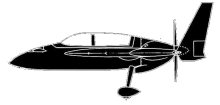
ASN Wikibase Occurrence # 293226
This information is added by users of ASN. Neither ASN nor the Flight Safety Foundation are responsible for the completeness or correctness of this information.
If you feel this information is incomplete or incorrect, you can submit corrected information.
| Date: | Sunday 7 August 2005 |
| Time: | 11:10 LT |
| Type: |  Rutan Long-EZ |
| Owner/operator: | On File |
| Registration: | N16WF |
| MSN: | 049 |
| Total airframe hrs: | 542 hours |
| Engine model: | Lycoming O-320-B2C |
| Fatalities: | Fatalities: 0 / Occupants: 1 |
| Aircraft damage: | Substantial |
| Category: | Accident |
| Location: | Albuquerque, New Mexico -
 United States of America United States of America
|
| Phase: | Unknown |
| Nature: | Executive |
| Departure airport: | Las Vegas-Henderson Sky Harbor Airport, NV (HSH/KHND) |
| Albuquerque International Airport, NM (ABQ/KABQ) | |
| Investigating agency: | NTSB |
| Confidence Rating: |
On final approach to the runway, the pilot lowered the landing gear and visually inspected it through the sight glass to make sure it was down and locked. About 20 seconds later, there was a sudden and total electrical failure and the engine lost power. The pilot switched from the MAIN battery to the AUX battery in an attempt to restore electrical and engine power, but left it selected for only about 2 to 3 seconds. He then switched back to the MAIN battery and concentrated on the emergency forced landing. He could not recall if the propeller was windmilling at the time (a windmilling propeller would be necessary to start the engine using AUX battery power). The pilot made a forced landing on an access road and collided with a wall causing substantial damage. The airplane was equipped with a dual electronic ignition system, not magnetos. A constant source of electrical power was required for ignition. In the event of an electrical power loss, the engine would lose power. An FAA avionics inspector said the 5-amp main fuse had opened, probably due to a shorted wire inside the master relay, resulting in an over-current condition. This caused the master relay to de-energize and cut power to the bus. The alternator, which was tested to 10.5 volt output, has a nominal output of 13.8 volts. Minimal output to charge the battery is 12.5 volts. The FAA inspector's statement noted that the cockpit-mounted master switch activated the positive side of the master relay solenoid. Standard industry practice was to wire the positive side of the master relay to the unfused input from the battery, and then switch the negative side using the master switch. Some commercially available solenoids have the positive terminal wired to the battery input.
Probable Cause: a total electrical failure due to a short in the master relay, causing the main fuse to open. Contributing factors included an inadequate electrical design by the airplane's builder, a low-output alternator, a cement wall, and unsuitable terrain on which to make a forced landing.
Accident investigation:
 |
|
Sources:
NTSB DEN05LA123
Revision history:
| Date/time | Contributor | Updates |
|---|---|---|
| 09-Oct-2022 17:36 | ASN Update Bot | Added |
Corrections or additions? ... Edit this accident description
The Aviation Safety Network is an exclusive service provided by:


 ©2024 Flight Safety Foundation
©2024 Flight Safety Foundation